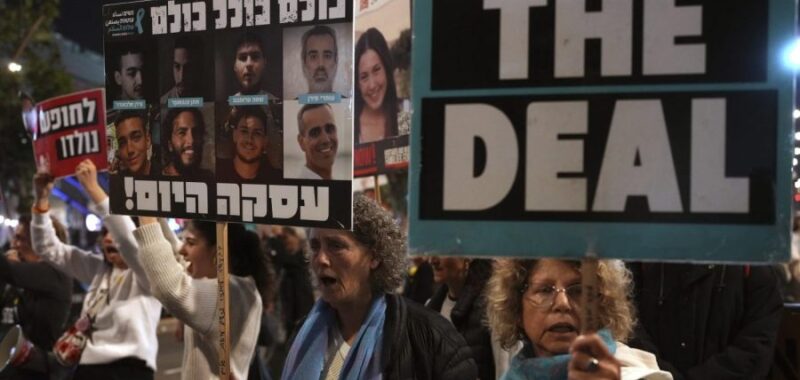
Assuming the Israel-Hamas ceasefire agreement is signed, the four key elements of Phase One are as follows:
Thirty-three Israeli hostages will be released over the 42-day period of Phase One — women, children and men over 50. At least two American citizens are expected to be released in Phase One, but it remains unclear how many of the 33 hostages are alive. The first three hostages are scheduled to be released on Sunday, Jan. 19 — under the Biden administration (marking a difference with the 52 American hostages held in Iran and not released until hours after Ronald Reagan became president). Four are to be released on the seventh day and so forth. The last 14 hostages will be released during the last week of Phase One. The remaining 65 hostages will only be released in a second phase.
One thousand Palestinian security prisoners held in Israeli detention will be freed in return for the 33 hostages, including at least 250 Palestinians with, as the Israelis term it, “blood on their hands.” Many of the prisoners will be released to third countries.
The fighting will cease and Israel will pull back its forces from key populated areas of Gaza over the six-week period. Details of the pullback have not been confirmed by Israel. Humanitarian aid will expand roughly three-fold to a presumed 600 trucks a day from Israel to Gaza.
What are the key takeaways after 15 months?
The ceasefire agreement needs to be ratified by the Israeli cabinet. Passage by the full cabinet is likely. Although its far-right members have continually threatened to bolt the coalition, they will not topple the government by bringing the ceasefire to a full Knesset vote, since the major opposition parties will vote in favor of the agreement (though either the far-right or the opposition may then try to topple the government).
The ceasefire agreement is essentially the same as the Biden proposals of May 2024, which had been coordinated with Israel. Many, including myself in these pages, felt that Israeli Prime Minister Benjamin Netanyahu walked back from those agreements for his own self-centered political reasons. It is important to note, however, that Hamas never agreed to the proposals either.
President-elect Donald Trump clearly played a major role in getting the parties to agree. Much has been made of Trump’s comment about Hamas freeing the hostages before his inauguration “or all hell will break loose.” What seems to be missed by many is the pressure that Trump’s envoy, Steve Witkoff, put on Netanyahu to agree to a deal. This may well be the portent of things to come.
Conventional wisdom held that Trump would allow Netanyahu to do what he wanted without restrictions — akin to the first Trump administration. It should be recalled, though, that the Abraham Accords were long in gestation and moved up in part to head off Israeli annexation of the West Bank. The ceasefire negotiations demonstrate that Trump was able to pressure Netanyahu — something Biden had been unable to do with Trump lurking in the background.
The last major hostage-prisoner exchange was in October 2011, when 1,027 Palestinian prisoners were released in exchange for Gilad Shalit, an Israeli soldier captured in 2006 via the Hamas tunnel network extending into Israel from Gaza.
One of the Palestinian prisoners released in that exchange was Yahya Sinwar, who later became the military and political leader of Hamas and was the mastermind of the Oct. 7 attacks. Sinwar was killed by Israel on Oct. 16, 2024. The names of those to be released will be published in advance to allow petitions to the Israeli Supreme Court to block the release especially of those prisoners “with blood on their hands.” The Supreme Court has never overruled a government decision to release a prisoner in an exchange, deeming it to be a national security matter into which the court should not intervene.
The ceasefire is designed to be part of a multi-phase, longer-term agreement that will include the full cessation of fighting, release of the remaining Israeli hostages, release of additional Palestinian prisoners and eventually a form of political agreement between Israel and Palestinians on Gaza (though not necessarily an agreement on the West Bank). The question of the “day after” is getting close. Will we get to Phase Two or Phase Three? Will Trump put pressure on Netanyahu as he did the ceasefire to get to a “day after” and the expansion of the Abraham Accords? One can only hope.
Jonathan D. Strum is an international lawyer and businessman based in Washington and the Middle East. From 1991 to 2005, he was an adjunct professor of Israeli law at Georgetown University Law Center.

